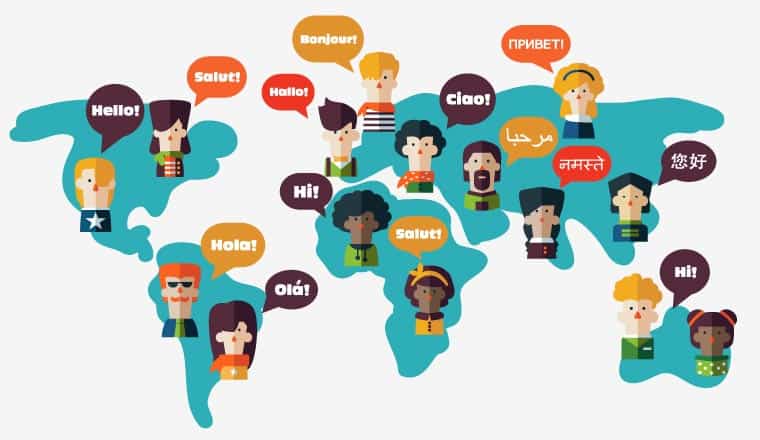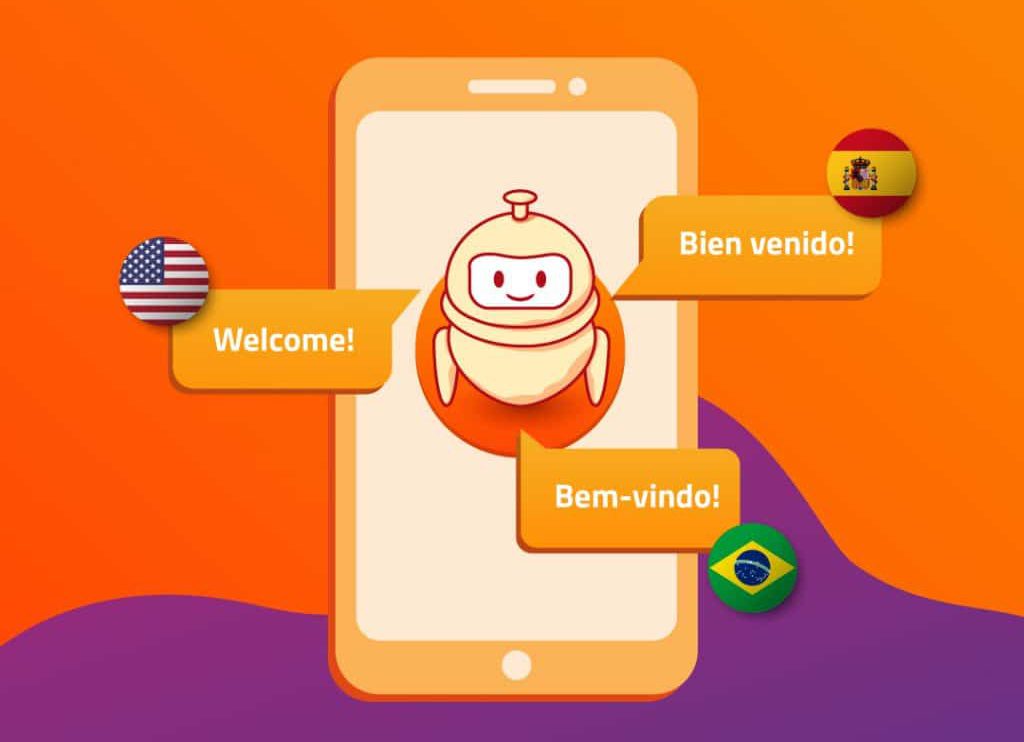There exists in the world of global customer support just two deadly sins: conjecture and sloth.
Too many companies are all-too-proficient in the art of making incorrect assumptions about what kind of support their customers want, where they want it and how they receive it. Other companies are simply too lazy to do anything about it.
But when 75% of your customers are more likely to come back to your brand after a customer experience in their own native language (Re:solution), the magnitude of these two sins looks all the more grave.
That’s why it’s never been more important to nail your multilingual customer support.
Below we’ve outlined the 5 biggest tips to boost your customer experience through multiple language help.
The Very First Step: Know your Customers’ Language.
It would be helpful, before diving into the nuts and bolts of multiple language support, to determine exactly what languages your customers speak.
You may think that a quick look at the regional analytics will give you full disclosure on where your customers are based, and therefore, what languages they speak.
And that’s true in many cases. But not all.
Image credit: Ultimate.ai
If you’re selling in the United States, for example, any monolingual marketing efforts may be missing out on the 20% of the population that speaks a language other than English at home.
Selling in Qatar? It would pay to be mindful of the fact that English, Hindu and Urdu are spoken more widely than Arabic.
Our world is forever getting more global, and making assumptions about the language of your customers falls very much into the realms of deadly conjecture.
Remember, the languages of the places you serve are diverse, and the customers who speak them are even more so.
There are a few ways to be sure you’re speaking your customers’ language:
Crawl social media: Find the hashtags used in posts about your brand and see which language groups rank as the most popular.
Search forums: You may find that online discussions about the niche you’re serving are more prominent in some languages than others.
Test emails: Send some professionally translated emails to the language groups you suspect to be top of the pile. Your open and click rates will tell you which language groups are opening your emails, and also whether or not your brand’s tone of voice works in that language.
Want to know more? 💡 Check out Launch Marketing’s article on discovering the languages of your customers.
5 Tips to Improving your Multilingual Customer Support
Tip #1 – Get Multilingual Support Agents
Let’s start with the most logical solution.
In an ideal world, your company would have a veritable army of multilingual customer support agents, each specialising in a language spoken by your customers.
Of course, the resource black hole that this would create would be immense. It’s simply not feasible to cover all language bases, but you can cover as many as possible by hiring bilingual or trilingual support agents of different nationalities.
Image credit: Call Centre Helper
Customer service staff with an aptitude for languages are becoming more and more common, and more and more diverse across the globe. Taking advantage of this could spell wonders for your multilingual customer service strategy.
So, what exactly are the benefits?
Lower costs: As the old saying goes ‘3 heads are better than 1, except if that 1 head can speak 3 languages.’ You’ll enjoy a much lower overhead with one multilingual support agent over 3 monolingual ones.
Accuracy: Though translation chatbots are on the rise, you still can’t beat the dependability of multilingual human agents.
Time zone coverage: If you hire remote support staff from around the world, you’ll naturally be able to cover more time zones and be more available to serve your customers.
Remember, you’ll soon only need to cover 16 languages to reach 90% of total online revenue (Babel). That’s a goal certainly within the scope of a small team of multilingual support agents.
Tip #2 – Translate your Knowledge Base
One step up on the logic ladder is addressing the champion of self-service in customer experience: the almighty knowledge base.
Your knowledge base is not only the CS asset that’s most simple to create and manage, but it’s also by far the easiest thing to translate when you’re looking to go multilingual.
And why would you not want to go multilingual? This kind of self-service is the preferred method of support for 40% of customers around the world (Forbes); a number which is only likely to rise as customers steer further and further from support channels that ask for personal data, such as live chat and email.
Localising your knowledge base is a relatively simple way to boost customer support in foreign languages. Its one-way transition of information means that translation can be done quickly, simply and without the need to address the more complicated textures of Natural Language Processing like sentiment analysis.
Some bits of knowledge base software, like Hubspot and Zendesk, provide you an option to automatically translate your support articles into a handful of popular languages.
Protip 👊 If you have customers outside of the Hispanophone and francophone spheres, you might want to consider a professional translation service. TextUnited can provide super cost-efficient translations to any language in the world, and help you set up a collaborative translation environment to ensure future translations are prepared and executed with ease.
Tip #3 – Take Advantage of Multilingual Chatbots
The stigma of chatbots as emissaries of cold, canned and often irrelevant responses has long been shrugged off.
Chatbots have risen as many once said they would, now increasingly solidifying central roles in many companies’ missions to offer instant multiple language support to their customers.
In the field of localisation, chatbots have truly proved their worth. Their ever-improving aptitude at languages, coupled with the fact that customers’ willingness to purchase through chatbots increased by 2.4 times between 2019 and 2020 (Drift), means that customers are consistently finding fluent experiences in their online transactions.
Image credit: Ask Suite
Here’s how a company could benefit enormously through a chatbot-centric customer service strategy:
Chatbots fulfill consumers’ need for instant assistance, something that 78% of them consider top priority (Vendasta).
Chatbots have the skills necessary to guide transactions the entire way from enquiry to purchase, rather than just point consumers in the right direction.
Chatbots passively build immensely useful databases of customer buying behaviours, which can shape pretty much everything you do as a business.
Want to know more? 💡 Check out how chatbots’ growing talents at multilingual sentiment analysis are paving the way for a free-flowing future in localisation.
Tip #4 – Be Omnichannel
Many companies nowadays are happy to open and close their customer stories exclusively in an email inbox.
But here’s the thing: availability is one of the pillars of CX success, especially in the field of multilingual customer service.
Having multiple channels through which your multinational customer base can contact you naturally opens as many doors as possible. It gives customers the impression that you’re always there to help and it also gives them a channel through which they can seek that help.
Given the wide scope of general human sensibilities and mannerisms across the world, it won’t be a surprise to learn that different countries vary considerably in terms of their favourite channel of contact.
Customers from Germany, for example, tend to prefer direct phone conversations, rather than hashing out problems via text. In Japan, however, SMS is valued far more highly, along with self-service, while speaking live on the phone is much less favourable (Statista).
It’s hard to account for every subtle tendency of international interaction, but being available across channels preferred by the nations that hold the most value to your company is a great strategy.
Tip #5 – Localise your Social Media
If there’s one channel through which you can expect pretty much all consumers to be influenced to buy, it’s social media.
Countries around the world have different affinities for different social media platforms, but all find common ground in the expectations they place on companies to provide multilingual customer service across those platforms.
Here’s a stat that demonstrates the power of language in social media: US Hispanics find social media adverts in Spanish to be more trustworthy and show more value of, and dedication to, the Spanish community than adverts in English (Facebook).
When language has the power to relay such emotion-drenched traits as these, the case for localising your social media presence becomes ever more robust.
Image credit: AddThis
Of course, social media is not one beast, but many different beasts that enjoy varying levels of popularity depending on the country. Facebook naturally reigns supreme in the majority of the world, but companies with large client bases in China, Russia and Japan for example would need to offer A-grade multilingual customer support across Wechat, V Kontakte and Twitter, respectively.
Oh, there’s one more thing…
…from this Facebook study. Incorrect translation, whether too literal or too loose, costs you customers. US Hispanics in the study said they have to look for direct customer service with an agent, or a properly translated knowledge base, in the case of unclear translation.
Though, in reality, the data says they simply won’t bother.
One bad experience is more than enough to cost you a customer. Start exploring new ways to optimise your multilingual customer support today.





